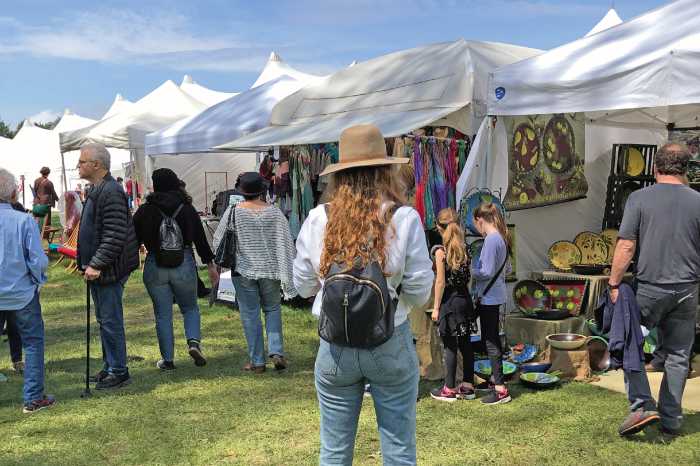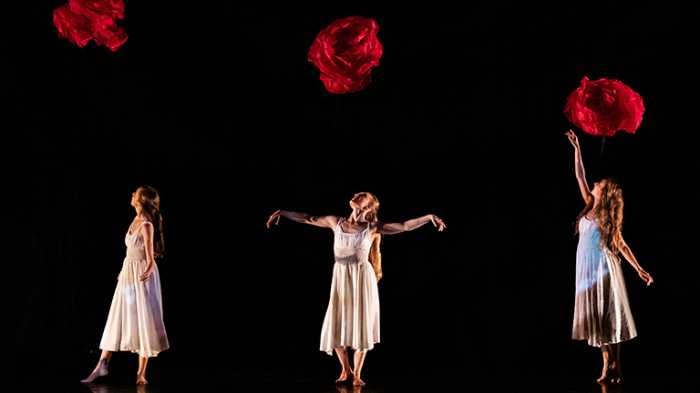I’ll admit that I was a little apprehensive about taking my 6-year-old daughter and 9-year-old son to the National Museum of Mathematics. I knew it would be a slam dunk with my math whiz son but my daughter has proclaimed many times that she hates math. Luckily, this hands-on museum offers something for everyone whether your kid is a mathematician-in-training or number phobic.
The museum, also known as MoMath, offers more than 30 interactive exhibits in 19,000 square feet of space spread out over two floors. You don’t have to answer all your children’s math-related questions as Museum educators float around the museum explaining the mathematical concepts behind the exhibits using age-appropriate language.
The Fun Begins
Although wee ones may be too young to understand geometry or calculus, they aren’t too young to take a ride in a cart in the “Coaster Rollers” exhibit, which is visible immediately as you enter. Here you hop on a cart and roll over unusually shaped acorns for a smooth and short ride. Although it appears at first glance that the ride will be bumpy based on the acorn’s shape, it is surprisingly smooth. This is because the rollers have a constant diameter, explains our helpful museum educator stationed by the ride.
The fun continues with an exhibit where kids can ride a square-wheeled tricycle along a track with humps. Of course my kids are fascinated by these square wheels and want to know how they work. Gabby Trojanowski, a museum educator, explains to me that this exhibit is based on calculus and “catenary curves,” which keeps the wheel axles perfectly level. While my kids are too young to understand this in detail, I’m delighted to see that the exhibits in the Museum inspire curiosity and motivate them to ask thoughtful questions.
“One of the great things about MoMath is that we are really great at getting everyone engaged with mathematics. We are all about affecting attitudes and changing perceptions,” says the Museum’s Executive Director and CEO, Cindy Lawrence.
“We are not teaching your kids a better way to multiply or add. Instead what we are trying to teach them is that math is much broader than they thought. It can be creative, exciting, fun and beautiful.”
Latest Hoop Curves Exhibit
Next up, my kids wanted to shoot hoops in the newly opened exhibit called “Hoop Curves.” Picture two basketball hoops that let your kids take their best shot at a regulation free throw. But these are no ordinary hoops. They contain cameras and light sensors, so that a computer records the height, angle and velocity of your shot. If you don’t get it in, the computer suggests – through data visualization and statistics – how you might improve your chances.
Then my kids took many turns using BallBot, a robotic ball launcher, which the kids could easily adjust turning several knobs and pushing a foot pedal, so that even the littlest players have a greater chance of scoring hoops. My son was pleased to hear that this had real-life applications and that professional teams such as the Golden State Warriors use statistical analysis to determine high-value versus low-value shots.
More Downstairs
After interacting with other exhibits on the main floor, we were ready to make our way downstairs for more fun and learning. My children loved taking turns figuring out puzzles in the “Enigma Café” and learning about the mathematical principle called fractals at the “Human Tree” exhibit. Exerting all that “brain power” on the many fun-filled exhibits and games required a little down time. So, we ended our Museum outing lounging in the “Magis Spun Chairs”, which have a pointed bottom, so you can rock side-to-side or spin completely around and around. Because of the design, you stay in the chair even though it feels like you will fall out any minute.
There’s no doubt there has been widespread media coverage about the fact that our kids are lagging in mathematical skills compared to other developed countries. In fact, this museum is the only math museum in the nation while some countries such as Germany have many. I can’t help but wonder if more kids came to MoMath and got excited and engaged with math, maybe we wouldn’t be in such a predicament.
The good news is that September and early fall is actually a great time to visit MoMath. “Kids are not going on field trips yet so the museum is less crowded and you’ll get a lot of attention from the educators,” explains Lawrence. And if it gets your kids more willing to do their math homework without complaint, well that’s a win-win situation.
Stacey Pfeffer is a freelance writer based in Chappaqua, N.Y.
When You Go …
National Museum of Mathematics
11 E. 26th Street
New York, N.Y.
212-542-0566
Hours: 10 a.m. to 5 p.m. seven days a week, 364 days a year except for Thanksgiving Day and the first Wednesday of every month, when the Museum closes at 2:30 p.m.
Admission: $16 adults, $10 children (free for children under 2)
Family-Friendly Bites in the Area
Shake Shack in Madison Square Park on the southeast corner near Madison Avenue and East 23rd St. Enjoy the beautifully built playground afterwards.













